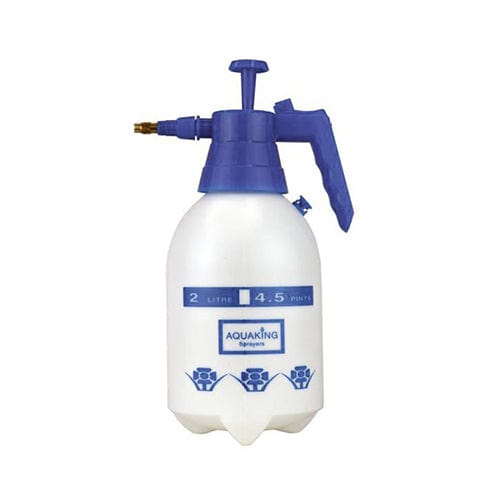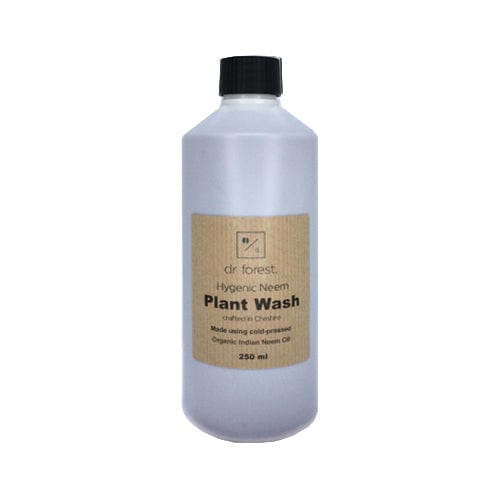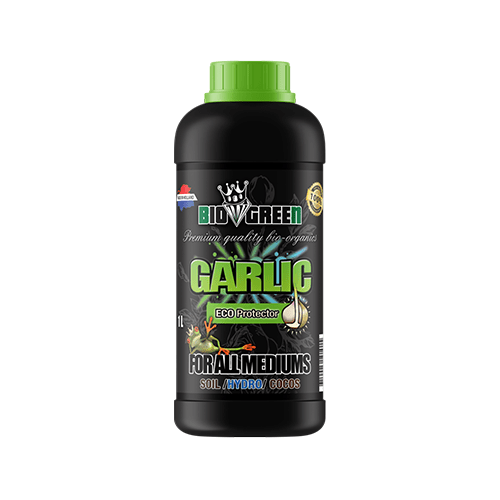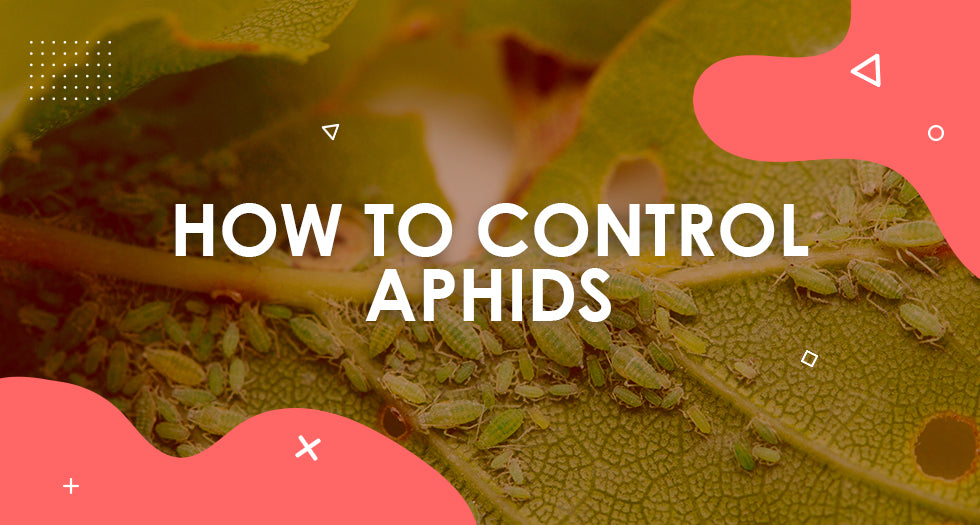Aphids are very small flying insects that belong to the Aphidoidea superfamily of insect species. They are infamous as being one of the most prevalent pests and cause havoc for agriculture and gardeners. These pests are most commonly observed in green, black or red colours and are sometimes referred to as blackfly, greenfly, ant cow or plant lice. You can often spot them on stems of host plants and on the underside of leaves.
Across the Aphidoidea family, the different types of species range in size and characteristics, but they all essentially feed from your plants. An invasion will cause damage that results in stunted growth, yellowing leaves, low yields and even death.
There are hundreds of native species in Britain and while some variants prefer to feed from a very limited range of plants, other types like the green peach aphid are less fussy and use hundreds of different plant species as their host. Many species will also favour some plants over others, such as nasturtiums. Therefore, depending on the type of aphids invading your garden or grow room, planting nasturtiums close to your crop could encourage these pests to stay away from your plants.
An infestation can cause growers real problems. Let’s find out more about these pests and how to control them to save your crops.
What do they look like?
Despite the large number of species in the family, aphids are normally quite easy to identify to the trained eye. They can range in colour from black, brown and green to pink, red and greyish brown but they all have similar features such as antennae on their heads, and six legs. They also have cornicles which have a tube-like appearance and can be found on the lower end of their body. Some have wings while others do not.
Upon first inspection, amateur growers may identify these pests incorrectly. This is normally due to the confusion over winged and wingless aphids. It’s usually only the third generation of females that begin to have wings. In addition, some species are known to cover themselves with secretions which makes them even more difficult to identify, leading to confusion over the best treatment methods.

The life cycle of an aphid
The life cycle of aphids is a complex process that is dominated by females. It begins in Spring with the hatching of a Stem Mother from an overwintered egg. The Stem Mother is the beginning of generation upon generation of wingless and winged females.
Generally, most species only have a female population at the start of the seasonal cycle due to their ability to reproduce via asexual reproduction (parthenogenesis). As a result, only one aphid is required to start a colony. Males tend to come in later generations in the Summer and sexual reproduction with males usually only takes place in the Autumn.
Due to their ability to reproduce and grow colonies at incredibly fast rates, it is essential to start treatment to remove these pests when the first signs are noticed.
As the colony expands and grows, you will notice that more aphids are born with wings, and are able to fly across the grow space and spread through the crop.
How do aphids damage your plants?
Typically, in small numbers, aphids are not a huge concern to a grower, however when colonies begin to expand, they can cause irreversible damage in short spaces of time.
An infestation can cause serious damage to crops and plants such as curling and yellowing leaves, underdevelopment, low performing yields and can even result in the death of the plant. These pests can also carry disease from one plant to another, infecting crops with viruses and diseases that will impact plants in other ways.
They feed by sucking the sugary sap that plants produce, and while feeding they inject a toxin into the stem or leaves, causing further damage to the plant that leads to poor overall health.
Due to the sugary nature of their diet, their faecal matter is essentially pure sugar and can be observed as a black, sticky coating across affected areas of your plant. The presence of this sugary solution, also known as honeydew, creates the perfect environment for harmful bacteria and fungal infections to form and thrive, creating further issues.
In an outdoor setting, you may notice that aphids form a symbiotic relationship with ants. Ants will feed on the sugary faeces the aphids produce. Once this relationship is formed, ants will begin to protect the aphids, and in some cases transfer them around your allotment, or garden to infect new plants in an attempt to preserve the aphids.

How to tackle an aphid infestation
Tackling an aphid infestation is relatively simple when you know what to do. The sooner you notice and start to treat an infestation, the better. Even if you only spot a few of these pests on your plants, you should act quickly due to their ability to reproduce at fast rates. The steps below outline the process you need to follow to control an infestation.
Step 1 – Wash the plant
Aphids are generally quite easy to wash off, and this is a great way to immediately reduce their numbers. This can be easily done by using a pressurised sprayer such as the Aquaking Pressure Sprayer and some clean water. Simply spray at high pressure to remove them from affected areas.

CANNA Aqua Clay Pebbles
|

HYP Lockdown Pads
|

Aquaking Pressure Sprayer
|
Step 2 – Introduce a plant wash or pesticide
Skram and Neem Oil are great organic pest control solutions. We recommend avoiding the use of harsh chemical pesticides unless absolutely necessary, so it’s best to use these as a starting point. Dilute in accordance with the manufacturer’s instructions and thoroughly wash your plants, ensuring all leaves and stems are completely saturated.

Maven Skram Plant Wash
|

Dr Forest Neem and Mustard Seed Plant Soap
|

Biogreen Garlic
|
Step 3 – Physically remove the aphids
If the infestation is very small, remove them as you go along. Aphids aren’t the most mobile insects, so you can easily spot them and physically remove them from your plant.
Step 4 – Add a layer of clay pebbles to the top of your substrate
Aphids often lay their eggs in the grow media. Moist, humid environments are great for speeding up the hatch rate of pests, so adding a thin layer of CANNA Aqua Clay Pebbles to the surface of your pot will create a barrier making it harder for the newly hatched aphids to work through. This can help reduce numbers as the life cycle repeats itself.
Step 5 – Predatory insects
If you’re unable to spray or wash your plants without causing further issues, it’s recommended that you introduce some form of predatory insect. Lady birds have been observed to consume up to 5000 aphids within their lifetime, making them an excellent choice to introduce to your grow space.
Predatory midges are also a good source of natural pest control. They attach themselves to aphids, feeding on their bodily contents and can kill up to 80 aphids in their lifetime.
Step 6 – When you think they’re gone, treat again!
Just like we said in our previous post on controlling thrips, when you think you have dealt with the infestation, keep treating for a week or two extra. This will ensure that you haven’t missed any, and will prevent another outbreak from occurring again. If you’re struggling to control your aphid problem, simply change your pest control solution and treat again.

SHOP NOW READ MORE






